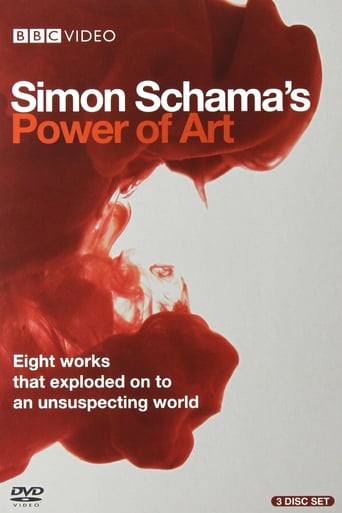GertrudeStern
Simon Schama's introduction to Caravaggio -- who he was, what he was doing, how other people felt about that -- is sometimes rudimentary, but truly hypnotic. The hypnosis is only broken when Schama looks closely at a painting (his looking NOT being rudimentary) and says something super gut-busting with his weird cadences and intimacy.For instance, in the Caravaggio ep, Schama dives into The Musicians, a piece featuring a cupid, a boy sadly tuning a stringed thing and baby Caravaggio himself, at the back of what Schama calls "this tight little group". Schama's ensuing analysis of the painting includes the lines "The lead singer is crying his eyes out, and he's just tuning up," and "(intruder) Oh yes, four youths in a closet. Exuse me, so sorry, don't mean to intrude! (tight little group) No no, come on in, darling, pull up a cushion, join us, we're just rehearsing." All of this is said in the most coy VO anyone has ever produced. He calls the painting "fleshy" and "claustrophobic". Really he just crushes it.This series is worth watching for the re-enactments (many, many good re-enactments), but worth suggesting for Schama's magnetism and keen observations. We should probably make sure this is finding the farthest reaches of space. 9/10!Update: I know some viewers are hot and cold on his unfolding of Bernini, but Schama's comments on the folds of The Ecstasy of Saint Teresa ARE enjoyable and that ep. IS dope.Update 2: He calls Rembrandt "Mr. Clever Clogs"!Update 3: Make it to the end of this series and you get to actually watch someone reenact Simon Schama himself as a 20 y/o ruffian staring at a Rothko. This man is a genius.
ignominia-1
I saw 3 episodes of this series, the one on Bernini, Caravaggio and Rothko. The paintings are awesomely lit and Shama's observations are interesting and original but I could definitely go for less dramatization. The repeated shots of the Caravaggio's impersonator panting, sweating while fencing on his own are totally indulgent and don't add much to the story; the actor playing Rothko annoyingly trying to seem intense and interesting; these are unnecessary visuals that cheapen the content of the show. Do the producers think we need to see the artist's lives play-acted to engage us? Do they think their art is not enough for the viewer? I find that this approach is condescending and dumbs down the audience. The art, Shama's commentary and narration of the artist's history would have been excellent enough.
LBJefferies
Whose Van Gogh is more nauseous, Kirk Douglas's or Andy Serkis's? Oh dear lord, how I wish I would have stopped watching this episode of Simon Schama's series, much as I stopped watching "Lust for Life"! How long before I can again look at one of his paintings without thinking of one of the worst examples of British overacting ever recorded? On top of this despicable performance, we are subjected to frenetic editing and oppressive sound effects. Deafening slurping of paint, pounding the canvas with the brush--I know painting and this is not painting. This is cheap pastiche after the video in the movie "The Ring". What a grotesque version of what was surely a beautiful-beautiful thing. Lastly and most reprehensibly, Mr. Schama takes advantage of the ignorant by presenting subjective opinion as fact. Van Gogh's Wheatfield is really the first piece of modern art? You say it so confidently it must be true--gimme a break. This is art history gone horribly wrong.
Tenate9
I have only watched Simon Schama's diatribe on Bernini and this 'review' is only on that one episode but I tend to think it's indicative of the whole series or even of his TV work in general. The write up in my local online listing said : Bernini's Ecstasy of Saint Theresa shows a nun in the state of orgasmic bliss. How was it ever allowed? Simon Schama tells a story of sex and the sacred in Seventeenth Century Rome. The ultimate premise of the show is that after a rise and fall style career Bernini ( whilst not so favoured - 'POPEular' - as when at his summit ) Made the 'Ecstasy of Saint Theresa' sculptural masterpiece - which again thrust him into the limelight. Schama's thesis is that this 17 Century Baroque tour de force or gaudy, kitsch ode to the farrago that is superstition - viewed from a non-observable angle ( false from the perspective of an observer ) can be seen that the angelic spear holder is about to 'shove' the spears 'head' up her in a very sexually provocative manner - her face in a climactic climax at this 'Charismatic' event. This is bizarre and if you see this work as it's meant to be seen, the angle of the 'thrust' is into her heart ( As the original mythic story suggests - the divine joy/sleep of God etc... ). That the face, in a state of orgasmic delight or the last moments of death, tortuous pain or just dozing off are all same is very well known and doesn't add anything to his platitudes on Art, sex or Bernini. It seems to be just a fantasy of, or a cheap trick to put some sex appeal into this, not even slightly charismatic TV historian.
